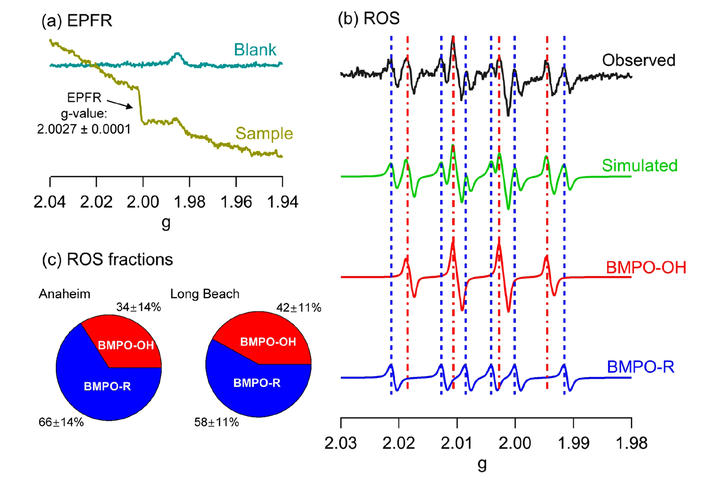Environmentally Persistent Free Radicals, Reactive Oxygen Species Generation, and Oxidative Potential of Highway PM2.5

Abstract
In urban environments, vehicle exhaust and nonexhaust emissions represent important sources of fine particulate matter with an aerodynamic diameter less than 2.5 μm (PM2.5), which plays a central role in adverse health effects and oxidative stress. We collected PM2.5 filter samples from two highway sites (Anaheim and Long Beach, CA) and an urban site (Irvine, CA) to quantify environmentally persistent free radicals (EPFRs) contained in PM2.5 and the generation of radical forms of reactive oxygen species (ROS) in water using electron paramagnetic resonance spectroscopy. The EPFR concentrations were 36 ± 14 pmol m–3 at highway sites, which were about two times higher than those at the urban site. EPFRs correlate positively well with CO, NOx, and elemental and organic carbon, indicating that EPFRs are emitted from vehicular exhaust. Good correlations of EPFRs and Fe and Cu may indicate that EPFRs are stabilized by Fe and Cu emitted from tire and brake wears. EPFRs are negatively correlated with ozone, suggesting that photochemistry does not play a large role in the formation of EPFRs and possibly also indicating that EPFRs are quenched by ozone. Highway PM2.5 are found to generate mainly OH and organic radicals in the aqueous phase. The generated ROS are correlated with PM2.5 mass concentrations and OH radicals show a good correlation with EPFRs, implying the role of EPFRs in aqueous OH radical generation. The PM2.5 oxidative potentials as quantified with the dithiothreitol (DTT) assay are correlated with ROS, OH, and organic radicals for PM2.5 collected in Anaheim, whereas little correlations are observed for Long Beach. These findings highlight the interplay of various PM redox-active chemical components and complex relationship between ROS formation and DTT activity.